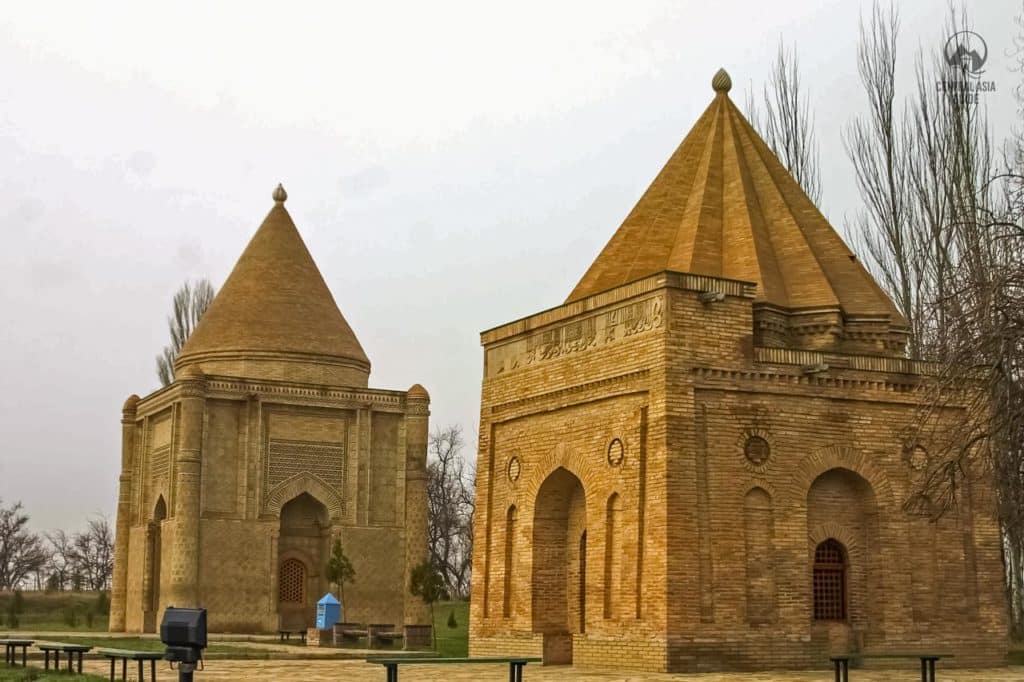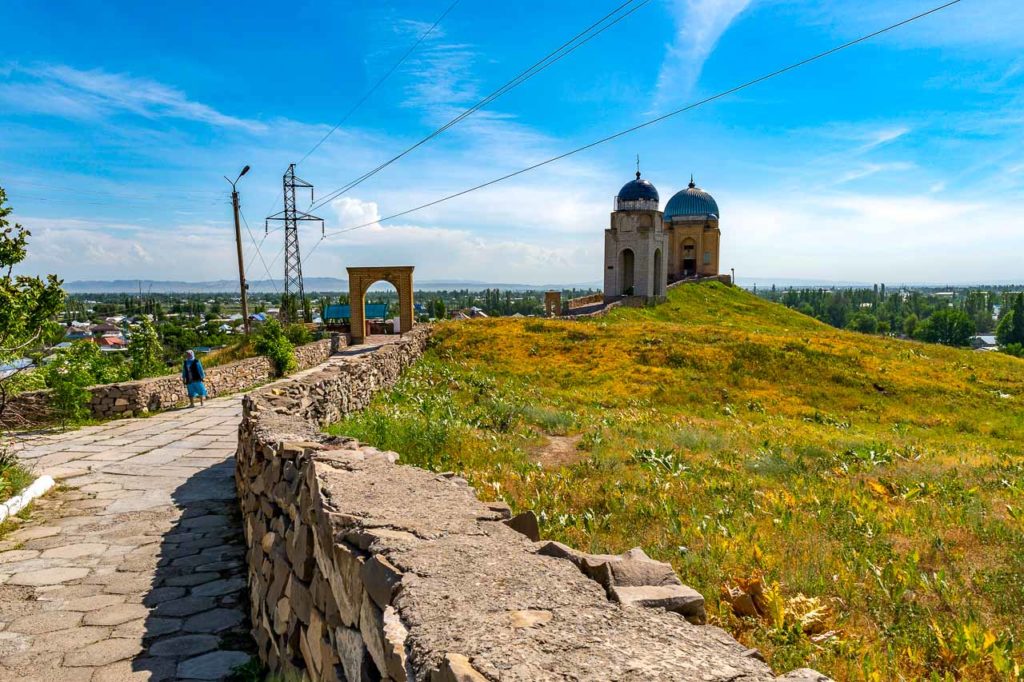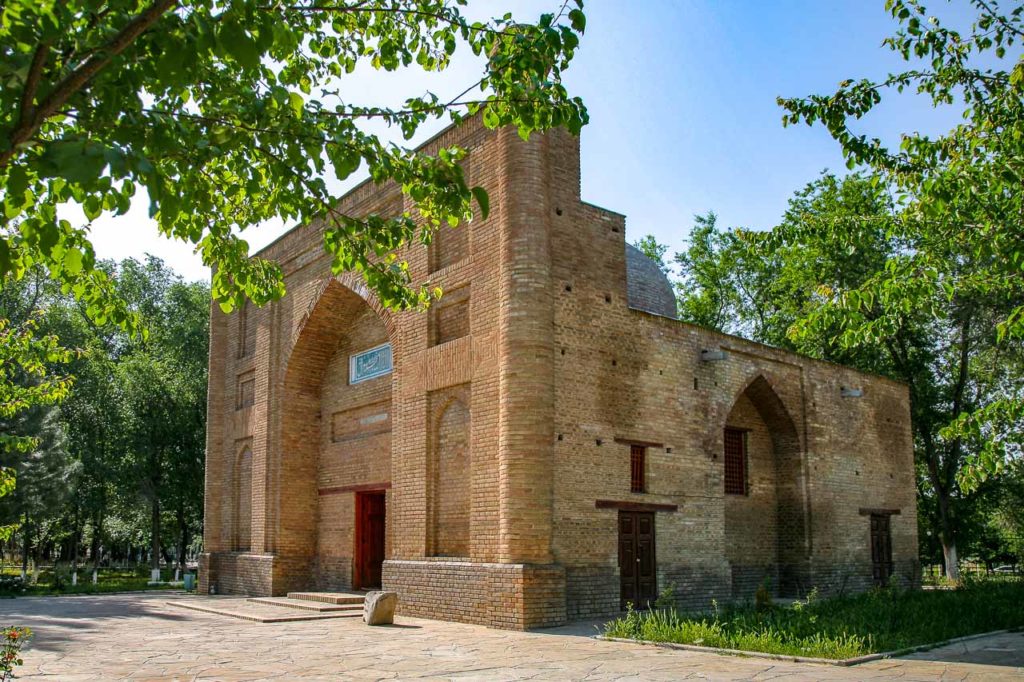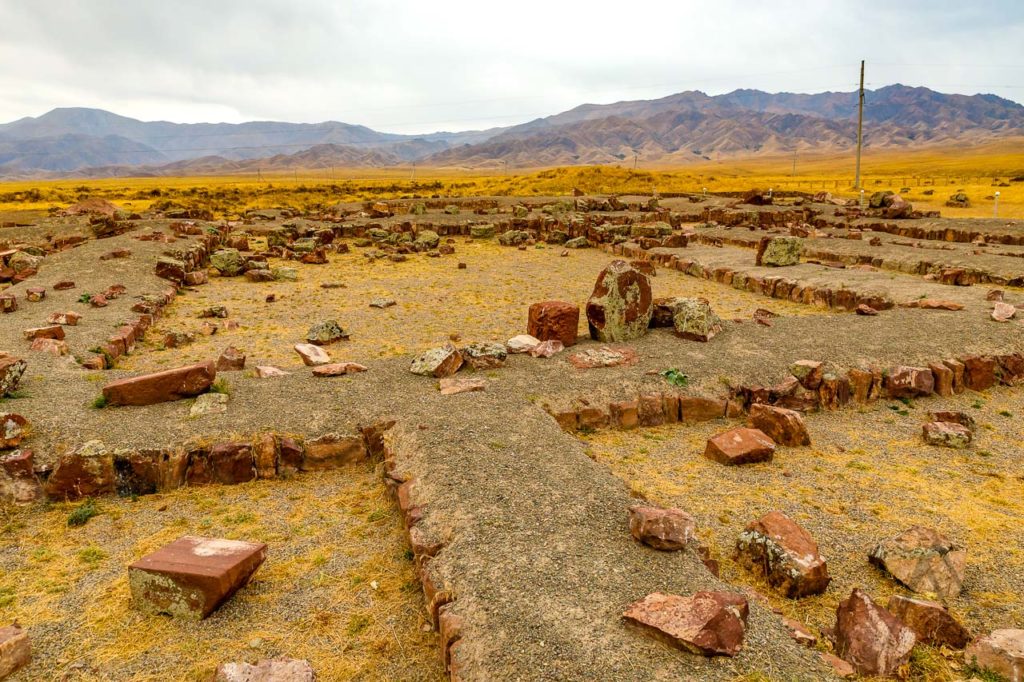Taraz
Taraz
Taraz is the capital of Kazakhstan’s Zhambyl Region, located along the Talas river, west from Almaty region. West from Taraz lie the Karatau mountains and to the south are the spurs of the Western Tien Shan along with border to Kyrgyzstan and behind it a city with very similar name to Taraz, called Talas. Taraz is one of Kazakhstan’s oldest cities dating back 2000 years to a citadel built in the valley and has a unique history.
The city was once very prosperous, then lost everything and got revived again under several different names and has finally returned its original name. Taraz city was also a part of the trade network of the Great Silk Road during its hay day as it joined together the modern China and Turkestan together with the other cities to the west, following the Syr Darya river towards the Aral Sea. It was a large trade hub with advanced crafts and fertile soils. However, archaeological findings prove that it was populated already a lot earlier.
Taraz history
The history of the Taraz city started from a fortress that was built by Zhizhi Chanyu. The founder died in battle in 36 BC near the fortress. First records about Taraz appeared in 568 BC in Greek sources, back then it was called “Talas”. A Turki tribal confederation, and then in the 8th century was ruled by the Karlauks, by that time the city was again known as a Taraz. The Persian Samads took control of the Talas Valley in the 9th century where they introduced Islam to Taraz.
At the end of the 10th century Karakhanids arrived to Taraz and in the 11th and 12th centuries Taraz declared its greatest value. So, by 12th century Taraz city was the economic, cultural, and political center of the Karakhanid Khanate. Some remarkable monuments were restored that have also remained to these days. However, that power lasted only a decade, as Taras was destroyed by the Mongols in 1220.
Under Chingis Khan the Taraz was renamed to “Yany” and lost its significance. Under the control of the Kazakh Khaganate in the 16th century Taraz appears to have been a small agricultural settlement. Following the new rulers of the Talas Valley in the 19th century, the Khanate of Kokand, a fortress was constructed on the site of the ancient Taraz and around it a new town began to develop.

Another new name was given to the city “Namangan Kuchek” it means small Namangan in Persian as many of the new arrivals came from Namangan in the Fergana Valley. In 1956 the city was renamed to “Aulie Ara” which means holy father in honor and respect of the Karakhanid ruler whose mausoleum lies in the town.
The Russians arrived here in 1864, led by General Mikhail Chernyaev, who conquered the town. In 1936 the town’s name was yet again changed to “Mirzoyan”, honoring Lenov Mirzoyan, the ethnic Armenian who managed Kazakh Communist Party repression from 1933 to 1939. Mirzoyan was also executed in that year as a victim of Stalin’s repression. Then in 1938 the name was changed to Zhambyl, honoring the Kazakh poet Zhambyl Zhabaev. Later in 1997 the city was finally renamed to Taraz.
What to see in and Near Taraz
As an ancient city, Taraz has a lot to offer for travelers. You may enjoy checking out caravanserais and craft producers, merchants’ warehouses, and shops. Taraz has significant two mausoleums that illustrate the magnificent ancient past of the city. Female visitors are advised to wear modest clothes and cover their heads when entering the mausoleums.
Tekturmas

It is better to start your exploration journey of the Taraz sites from the Tekturmas mausoleum. Tekturmas is located at the outskirts of the city on the bank of the Talas River belonging to the 13th century architectural monuments and it is considered being one of the holy places of Taraz.
Pilgrims and residents believe that “Tekturmas” is the grave of the Sultan Saint Mahmud Khan, a military leader during the reign of the Karakhanid dynasty. From here you can also enjoy a great panoramic view of the city and the Karatau mountains and the Talas Alatau open area as far as the eye can see.
Karakhan Mausolea

The Mausoleum of Karakhan was rebuilt at the beginning of the 20th century. The mausoleum dates back to the 11th or 12th century and is also called the mausoleum of Aulie-Ata, the same name as the city was once called.
The mausoleum is believed to be the grave of one of the rulers of the Karakhanid dynasty.
Mausoleum of Aisha Bibi
It is one of the mausolea that you must visit, here lies the girl, the lover of Karakhan. Aisha Bibi village is located 8 km away from the Western gateway of the city. You can take the minibus from Taraz to Shymkent and tell the driver that you want to stop in Aisha Bibi or make the way by a taxi. The mausoleum is about 500 m away from the main road. It stays in a fenced compound amid grounds filled with red rose bushes making this a pleasant spot in the summer season. To Akyrtas you can get by taxi from Taraz and driving towards Almaty for about 33 km over the Eastern edge of the town next to the village Aksholak.
The legends indicate that Shakhmakhmud the governor of the Taraz fell in loved with Aisha Bibi and asked for her hand in marriage. However, he was rejected by the Zangi-Ata the stepfather of Aisha Bibi. She opposed her stepfather and drove to Taraz to be with the man she loves but just short of the city she was bitten by a snake and died. The mausoleum was built in the style traditional for that time. The base of the building has a cubic shape, terracotta tiles and ornaments of zoomorphic and geometric motifs were used as decoration.
Zhambyl Regional Museum
of History and Local Lore
The regional museum is located along Tele bi street and was founded in August 1931 as a city museum. Throughout its existence, the museum collection has been supplied from various sources of archaeological expeditions and also by individuals.
The most valuable exhibits of the Zhambyl Museum were originally archaeological and numismatic collections, ethnographic items, photographs and documents. The pride of the museum is the courtyard at the back, a glass-walled similar yurt building. Inside there is the best collection of fascinating Turkic stone statues placed at places of burial in Kazakhstan called balbals. In the other building abutting the courtyard the history of Talas area is illustrated.
Kali Yunus Banya
The Eastern bath of Kali-Yunus is one of the main architectural sights of Taraz. This architectural monument of the late 19th century is located in the central part of the city along Bayzak Batyr street, not far from the Karakhan mausoleum.
Named after a wealthy merchant, the building is covered with 11 brick domes of differing sizes. The Eastern bathhouse of Kali-Yunus was built by the residents of Aulie-Ata. A small pile of coins found next to one of the baths allowed archaeologists to establish the exact time of the bath’s existence. In 1982 the Kali-Yunus bathhouse was included in the list of historical and cultural monuments of the Republic of Kazakhstan.
Akyrtas settlement ruins
Akyrtas settlement is one of the most mysterious ancient sites of Kazakhstan and Central Asia. It is located about 45 km from Taraz and constitutes of a heavily built area of about 4ha and its wall is constructed of large red sandstone blocks.
The purpose of this site is still being questioned by the archaeologists as there is no clear academic evidence about this settlement. Some argue that it was the palace complex of an Arab governor, others claim that it was a fortress and yet others say that it was a Christian or Buddhist temple. There are also versions of the caravansaerai and settlements of Kasribas. Stone blocks of red sandstone are scattered around and the outlines of buildings are well visible on the foundation. Locals also consider Akyrtas a place of power. They claim that the stones here stones energize a person and heal all diseases.

Akyrtas has also been recognized by Unesco as a part of the Silk road network in the region. The most likely reason for abandoning the site was that the river bed next to the city remains is now dry even though the remains include a remarkable collection of irrigation systems and reservoirs. Akyrtas palace is also built according to the Middle Eastern architectural style, which means that it was built by Arabic architects and it therefore reminds palaces more from Jordan, Iraq and Syria than Central-Asian palaces.
Travel to Taraz
Taraz by plane
Taraz has an airport name Aulie Ara, it is located on the West part of the town. There are regular domestic flights. SCAT Airlines operates to Nur-Sultan daily and Qazaq Air flies twice a day to Almaty.
Talas by train
There is a railway station in Taraz in the Northern edge of the town in which the trains operating regularly between Almaty and Shymkent stop. You may check schedule in the official website https://www.railways.kz/
Talas by bus
Taraz bus station is located at the edge of the Northeast side of the town and is a Soviet-era building. There are frequent departures to Shymkent by marshrutka and departures by both bus and marshrutka to Almaty. There are also few departures to Bishkek. Marshrutkas leave when all the seats are filled.
From Almaty, in the Sairan bus station you can take a long distance bus to Taraz and there are many buses to Taraz throughout the day. The night buses buses are departing as late as 23:30. The journey from Almaty to Taraz by bus takes about 7 hours.
Other sights & destinations near Taraz
Page updated 1.1.2023